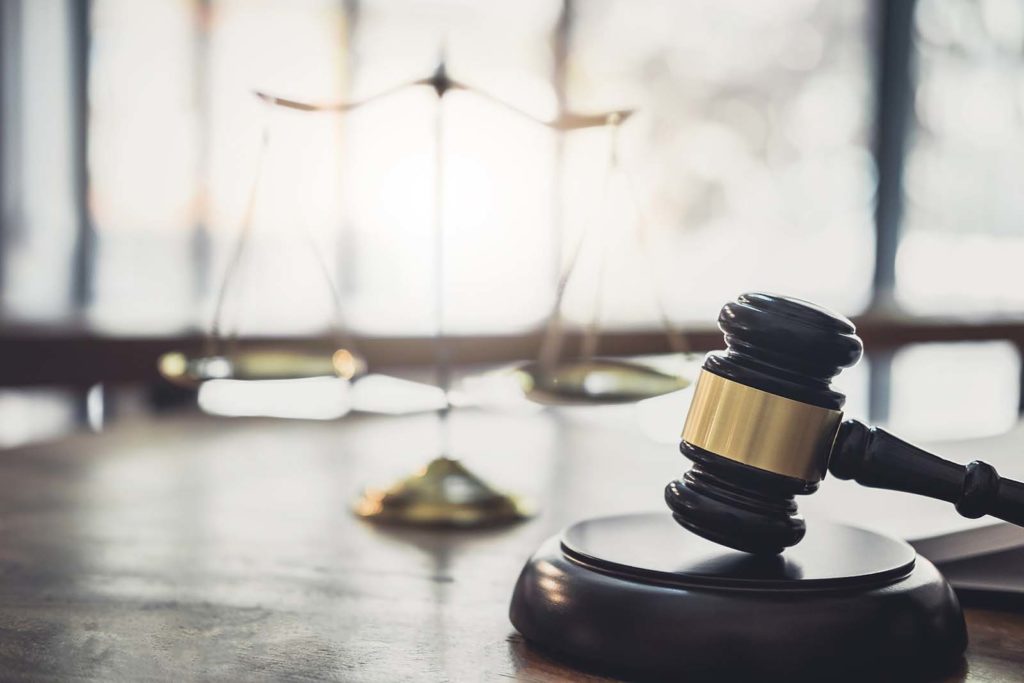Contents
Summarised below are some of the most common debt solutions available to UK Debtors. Knowing what your options are can help you to make an informed decision that not only deals with your debt issues but also lays the groundwork for a more stable financial future.
If you feel that any of the debt solutions mentioned might apply to you, or just want to learn more, click through to our detailed guides for further information.
Debt worries – where can I get help?
First and foremost, it’s important to recognise that dealing with debt can be a stressful and confusing task. There are so many options out there, and every debtor will face different issues. Whilst it’s often useful to get to grips with what debt solutions might be available, there’s no shame in seeking help and doing so can often be the most productive step you take on your debt journey.
There are a number of organisations that provide members of the UK public with free, impartial debt advice and debtors may wish to search around for an advisor they feel comfortable with before having a serious conversation.
Debt solutions – is it possible to write off debt?

Writing off debt, or cancelling debt, can sound like the ideal solution for debtors. In reality, it’s quite uncommon and can be only be achieved through an insolvency solution or where exceptional circumstances apply.
In certain cases, creditors may agree to write off a debt on compassionate ground, provided that the debtor can show evidence of their hardships. This might include a severe or terminal illness, or a permanent disability evidenced by a doctor’s note. In cases where a debtor is temporarily struck down by illness, it may also be possible to agree that a creditor will not chase outstanding debt until the debtor is back on track and working.
In most other situations, the only way to write off debt is via an insolvency solution. There are a few of these that are available to debtors, and what works for you will very much depend on your own situation. The most common insolvency solutions in England and Wales include Individual Voluntary Arrangements, Debt Relief Orders and Bankruptcy, whilst in Scotland, debtors might look to Protected Trust Deeds, Debt Arrangement Schemes or Sequestration.
Individual Voluntary Arrangement (IVA)
An Individual Voluntary Arrangement (IVA) is similar to a formal repayment plan and is available to debtors in England and Wales who can reasonably be expected to pay some money towards their debts but not the full amount. Debtors who do manage to negotiate an IVA with their creditors may find it easier to manage their financial situation as repayments will be calculated with a person’s unique circumstances in mind to ensure that they are affordable and realistic.
IVAs are administered by an Insolvency Practitioner (usually a solicitor or an accountant) and in most cases, they will charge their own fees on top of the total debt owed. An IVA typically lasts between 5 and 6 years and the length of time will vary between debtors dependent on whether they can release equity from an asset they own such as a house. Debtors who happen to receive a windfall payment either from redundancy, an insurance claim or due to another occurrence may be able to make a lump sum payment as part of an IVA, reducing the timeframe required sometimes to as little as 6 months.
As a court-approved ‘repayment plan’ an IVA involves striking an agreement with all the creditors to which a debtor owes money, with those holding 75% of the debt needing to agree for the arrangement to be accepted. Depending on their circumstances, most debtors will then make an agreed monthly repayment to their Insolvency Practitioner, who will distribute the money to the creditors. Once an IVA has finished, the debtor will be issued with a certificate of completion to prove that their arrangement has successfully run its course.
One major advantage of IVAs is that once creditors have agreed to an arrangement, they give up their right to pursue a debtor for a debt that is covered by the IVA. This means that they are unable to take legal action against a debtor to recover the sum owed provided that they stick to the terms of the agreement. If the debts involved have not been settled in full by the end of the IVA’s agreed term, a debtor will no longer be required to pay the outstanding balance which will be written off.
Any debtor who is considering entering into an IVA should be aware that their name will be added to the publicly available Individual Insolvency Register and it will not be removed until three months after the agreement has finished. In addition, an IVA will remain on a debtor’s credit report for six years and this can affect their ability to access credit and even certain types of employment.
Debt Management Plan (DMP)

Much like an IVA, a Debt Management Plan (DMP) is an arrangement made between a debtor and their creditors to repay outstanding debts in regular instalments. The difference between these two insolvency solutions is that, whilst IVAs are court-approved and legally binding, DMPs are not and may be considered as a flexible alternative.
DMPs can be arranged by approaching your creditors to strike an informal agreement. A DMP is typically set up by a debt management charity or company and whilst some firms charge a fee, others will provide their services at no cost. In many cases where creditors agree to a DMP, a debtor will only have to make a single monthly payment to be distributed between each creditor until the debt has been settled. The exact terms of a DMP will vary based on a debtor’s circumstances, though.
The benefits of a DMP are broadly the same as an IVA, in that creditors may agree to freeze any charges and the interest accruing against a debt. This can give debtors more time and space to deal with their debt without defaulting on a loan. Throughout any agreed DMP period, a debtor may have to undergo a budget review to identify whether there has been a change in their financial circumstances and if they can afford to make higher repayments. Budget reviews can also highlight shortfalls in a debtor’s finances and lead to lower monthly repayments, although in such cases the included debts will take longer to repay.
Despite this, and unlike an IVA, a DMP does not prevent creditors from contacting or commencing legal action against a debtor and there is no guarantee that they will agree to a freeze of charges or interest. There is no legal agreement involved when entering into a DMP and both the creditors and the debtor can walk away at any time, although doing so will not deal with the debt involved.
Although a DMP is an informal agreement, it can still influence a debtor’s credit score. This is because each part repayment of a debt may be recorded against the debtor’s credit file and each account included within a DMP may have a marker against it. Although a DMP is not explicitly registered against a debtor’s credit file, such agreements often go hand in hand with a history of defaults or missed payments and these will remain on file for 6 years. To find out more about Debt Management Plans, read our full guide here.
Debt Relief Order (DRO)

A Debt Relief Order (DRO) is an insolvency debt solution for that may be appropriate for those who have relatively low levels of debt totalling no more than £20,000. A debt relief order will freeze all included debt repayments for a period of 12 months, during which time interest will not continue to accrue. If your financial circumstances have not changed for the better at the end of the DRO period, your debts will be written off and you will no longer be required to pay them in full.
There are lots of criteria that debtors must meet to qualify for a DRO, one of which is that they must not own standard assets or any other item of value that totals more than £1,000 – including the property they live in. Those who have had a DRO within the previous 6 years, or are currently going through another insolvency process, will not qualify. In addition, to be eligible for a DRO a debtor must be left with no more than £50 of surplus income left each month after paying for essential living costs. A more extensive list of the requirements to qualify for a DRO can be found in our guide to writing off debt.
For those debtors who do meet the criteria, a DRO adviser or insolvency service can assist in making an application – for which a non-refundable £90 fee will apply. Once approved a DRO typically lasts for a 12-month ‘moratorium’ period, during which time all interest and charges against the covered debts will be frozen. Creditors are prevented from making continued contact with a debtor to chase the debt, or from taking legal action. If the debtor’s financial situation has not improved by the end of the 12 months, the debts are written off.
It’s important to note that even a minimal improvement in a debtor’s finances can cause the DRO to be revoked. If their surplus monthly income does increase above the £50 limit, they will no longer fit the criteria and it is unlikely that they will qualify for a write off under the guise of a DRO. If this happens, creditors will be entitled to begin chasing repayment of the debts owed to them and are again able to take legal action where necessary.
Whilst DROs can help debtors to manage their financial situation, they do appear on credit files for 6 years and this may severely restrict a debtor’s ability to access other forms of credit.
Administration Order

An Administration Order is a County Court endorsed repayment plan agreed between a creditor and a debtor. Administration Orders are not available in Scotland. Although once a popular form of debt relief, Administration Orders are now less common as debtors are more likely to consider seeking a Debt Relief Order. The circumstances of some debtors, however, may better suit an Administration Order.
To qualify for an Administration Order a debtor must no more than £5,000 across at least two debt and have received at least one County Court Judgment. An Administration Order is designed to protect a debtor from their creditors and the County Court will consider exactly how much they can reasonably afford to repay each month. A Composition Order can also be applied during this time, which determines how long the debtor must make monthly repayments for. Once the time limit has expired, all debts included in the order are written off.
Once an Administration Order has been agreed, creditors cannot take any further action against the debtor without permission from the court and are unable to add any further charges or interest to the debt. Although there aren’t any fees to pay for setting up an Administration Order, the court will receive 10% of each monthly payment the debtor makes.
As with many other debt solutions, an Administration Order can affect a debtor’s credit score and will appear on a credit file for 6 years from the date of the order. The debtor’s name will also be added to the public Register of Judgments for six years and this is likely to impact on their ability to access any further credit during that time.
Repayment Arrangement

Whilst not an insolvency solution, a repayment arrangement can help debtors to manage their financial situation. Repayment arrangements involve a debtor making direct contact with each of their creditors to negotiate a regular repayment figure that they can reasonably afford based on their own personal circumstances.
Before accepting a repayment arrangement offer, creditors will generally require details of a debtor’s income and regular household expenditures to assess the situation. An example of a successful arrangement might be where a person has fallen behind with debt and recommences making usual payments, whilst offering to make up their arrears with regular instalments. In these circumstances, and with the support of the creditor involved, a debtor may be able to prevent their account from defaulting.
Creditors are not prevented from contacting a debtor during a repayment arrangement and may commence legal proceedings as they see fit. Although a repayment arrangement is not a formal debt solution, it may still affect a debtor’s credit score as the lower repayments will be reflected on their credit file.
Token Payment Plan (TPP)
A Token Payment Plan (TPP) can help debtors to cope with a major change in their financial circumstances. In plain terms, a TPP is a temporary agreement between a debtor and their creditors to repay only a token sum (for example £1 monthly) whilst they attempt to adjust to their new financial situation. TPPs are usually only suitable for debtors who receive just enough income to cover their essential living costs but are likely to see their situation improve within 12 months.
As with the majority of debt solutions, making reduced payments via a TPP will affect a debtor’s credit report and can make it much more difficult to access further credit in the future. TPPs are not suitable for long-term debt solutions and are mainly used by debtors who are experiencing temporary difficulties which are likely to be resolved.
Full and Final Settlement Offers

In certain circumstances, debtors may be able to agree a ‘full and final’ settlement figure with their creditors. This is effectively a lump sum repayment to settle a portion of the outstanding debt in exchange for writing off the remainder. A full and final settlement offer is not a formal insolvency solution and is likely only to be possible for debtors who happen to come into some money, benefit from a windfall payment or have a significant savings pot that could settle part of their debt.
When a creditor considers a full and final settlement offer, they are likely to look at whether there is any chance of the debtor being able to pay off the full debt and how long it would take to reach that point. Creditors are unlikely to accept a full and final settlement offer unless the sum involved is substantial enough to make it financially viable for them and an explanation of why a debtor’s financial situation is unlikely to change will be required.
Creditors are under no obligation to accept any full and final settlement offer and they may choose simply to continue chasing a debtor for repayment. Debtors should also be aware that even though dealing with debt in this way may be called a full and final settlement, a record of their part payment will remain on their credit file for 6 years. As full and final settlement offers frequently come about following a default, the part payment will be dropped from a debtor’s credit file 6 years after the default date.
Bankruptcy
Although commonly understood to be a final option when it comes to dealing with debt, bankruptcy is an insolvency solution that can be very helpful to debtors in certain circumstances. A debtor can apply themselves to be made bankrupt, however, it is also possible for a creditor to ask the court to do so without a debtor’s permission if they owe at least £5,000. Bankruptcy can have serious consequences and is usually only suitable for debtors who have no reasonable way to pay their debts, have very few assets or possessions of value and are unlikely to see an improvement in their situation in the future.
When a debtor is declared bankrupt, many forms of unsecured debts will be frozen and the pressure of dealing with creditors is removed. Once the bankruptcy is discharged (normally after 12 months), the debtor will no longer have to repay the debts that were included, and they will be written off. If it is determined that a debtor’s financial circumstances are such that they have spare surplus income during the bankruptcy period, they may be asked to pay into an Income Payment Agreement (IPA) for 3 years, or legally required to do so as part of an Income Payments Order (IPO). An IPA is only likely to be considered where a debtor has a surplus of at least £20 each month after paying for essential living costs and those who only receive an income from benefits will not be required to do so.
Debtors are subject to many restrictions during the bankruptcy period and these can have a significant effect on their life. Bankrupt debtors cannot apply for credit over £500 without informing the provider and cannot act as a director of a company. Their career may also be affected as certain the professional bodies for certain jobs (for example solicitors and accountants) may prevent bankrupts from working in those areas. Applying for bankruptcy is not cheap – in England and Wales a £130 application fee and £550 bankruptcy deposit apply, whilst in Northern Ireland, a court fee of £144, a deposit of £525 and £7 legal fee is required.
Bankruptcy is often seen as a fresh start, as most debts can be included. There is a set end date and creditors can no longer take action against a debtor. Despite this, bankruptcy may not be the best or only option available to many debtors and comes with the risk that a person may lose their home and any other assets of value. Bank accounts in the debtor’s name will be frozen and their credit file will be marked for a period of six years – during which it will be extremely difficult to access most forms of credit. Debtors should also be aware that bankruptcy is a public process and that their name will be added to the public Insolvency Register.
Debt Solutions in Scotland
Due to Scotland having its own legal system, some of the debt solutions used elsewhere in the UK are not available. There are still options out there for Scottish debtors, however, and certain solutions such as Debt Management Plans (DMPs), Repayment Arrangements, Token Payment Plans (TPPs) and Settlement Offers continue to work in the same way as in other parts of the UK. The way that creditors consider writing off debt due to exceptional circumstances is also the same in Scotland and remains an equally uncommon solution.
Debt Arrangement Scheme and Debt Payment Programme

A Debt Arrangement Scheme (DAS) is the only statutory debt management plan in the UK and is available exclusively to debtors living in Scotland. A DAS enables a debtor to enter into a Debt Payment Programme (DPP) which can help them to pay back their debt at an affordable monthly rate – calculated with the debtor’s personal and financial circumstances in mind.
Before applying for a DPP, debtors must seek DAS advice from an approved money advisor who will help them to establish what a reasonable monthly payment might look like and how long the DPP should last for. DPPs can prove to be a flexible method of dealing with debt as the monthly repayment figure can be amended or a payment break can be granted to reflect the changing circumstances of the debtor. Crucially, DPPs can help debtors to cope with debt by prohibiting creditors from chasing the money owed or commencing legal action.
DPPs are not free and 22% of each monthly payment will be allocated to cover the running costs of the programme fees. These fees will not negative impact on the debtor, though, as their debt will continue to be reduced by the total monthly sum paid. Debtors who enter into DPPs are also subject to a number of conditions, including that they must make not make independent payments against debts that are covered by the programme or apply for credit over £2,000 (or at all in certain circumstances).
Once a DPP is up and running, creditors must comply with the provisions of the DAS legislation, which prevent them from charging any further fees or applying additional interest to the debt. When DPP has been completed, the debtor will no longer be liable to make further payments on the debt, which will have been settled in full.
Any debtor who uses a DPP will be entered on the DAS register, which is often checked by credit reference agencies. This may impact on debtor’s ability to take out further credit as a result.
Protected Trust Deed
A Trust Deed is an insolvency solution that is exclusively available to Scottish residents and has some similarities to an IVA in England and Wales. To qualify for a Protected Trust Deed, a person must have unsecured debts that outweigh their assets – for example, debts of £10,000 versus only £4,000 worth of assets. Unsecured debts include things such as personal loans, store cards, catalogue and credit card debts.
Trust Deeds can be set up by an Insolvency Practitioner (who acts as a Trustee) and last for a fixed period, usually of 4 years. During this time all of a debtor’s assets will be managed by the trustee who will attempt to pay as much of the debt as possible. In doing so, they may decide that the best course of action is to sell certain assets to pay off creditors. A trust deed can become ‘protected’ if the majority of creditors agree to its terms. If a trust deed is protected, creditors are not allowed to chase a debtor for payment and cannot take court action against them.
During a Protected Trust Deed, the debtor can make repayments towards the debt that are calculated to be affordable based on their circumstances. Once a 4 year period has elapsed, any included debts will be written off. If a debtor does have assets that could reasonably be sold to put money towards the debt, they may be required to do so however they are usually able to keep possession of one essential vehicle provided that it has a total value of less than £3,000.
Protected Trust Deeds can be a useful solution for Scottish debtors and can give them the time and space to contribute towards their debts without the need to undergo a more intensive insolvency solution such as sequestration. Unlike with certain other debt solutions, debtors are not legally prevented from borrowing further money and are not generally prevented from working in certain lines of employment (although may not be able to act as a company director).
Having a trust deed, protected or not, will appear on a debtor’s credit report for a period of 6 years and this can make it extremely difficult to access further borrowing, for instance, a personal loan or a mortgage. It is also worth keeping in mind that if a debtor does not cooperate with their trustee, an application to make them bankrupt can be made.
Sequestration

Sequestration is the Scottish form of bankruptcy and can only be achieved if a sheriff court issues a bankruptcy petition against a debtor. For this to happen a debtor must apply after having received a certificate for sequestration from an approved debt advisor to confirm that they have taken advice and are eligible for bankruptcy. Their creditors can also apply where the total sum owed is £3,000 or more. Sequestration is administered and managed by Scotland’s Insolvency Service, the Accountant in Bankruptcy (AIB).
Before seeking a bankruptcy order, creditors must have issued a debtor with a ‘charge for payment’ or statutory demand and the payment time limit must have elapsed. The time limit for a ‘charge for payment’ is 14 days, whilst a statutory demand allows debtors 21 days to reply. Creditors must also provide a debtor with a copy of the AIB’s Debt Advice and Information Package. For debtor’s who seek out bankruptcy themselves, there is an application fee of £200, along with the Minimal Asset Process (MAP) fee of £90. Read on for more information about the Minimal Asset Process which we cover later in this guide.
Once an application for sequestration has been made the AIB will assign the debtor with a trustee if they have not chosen their own. A trustee deals with the bankruptcy process and will handle the case by investigating all a debtor’s assets and their financial circumstances in general. Trustees have the legal authority to release equity from these assets to cover the costs of the outstanding debt, however they may also seek regular contributions from the debtor’s income. Sequestration will usually be discharged after 12 months and all included debts will be written off, however if the debtor’s financial situation changes during the sequestration period they may be required to make payments towards their debts for a period of up to 4 years after the initial application.
Like bankruptcy elsewhere in the UK, sequestration can give a fresh start to debtors who have no reasonable alternative. Once an application has been approved, creditors can no longer chase a debtor for the money owed and no legal action can be taken in respect of the debt. All contact will be made via the trustee and so the stress of struggling with debt can be lifted.
Despite the positive aspects of sequestration, it can also majorly impact on a debtor’s life – now and in the future. Debtors are required to provide information relating to their income and expenditure and will have limits placed on what they can spend beyond essential living costs such as for household bills and groceries. A debtor’s ability to take up certain kinds of employment can be restricted, and in some cases major assets such as a house may need to be sold. If a debtor receives a lump sum windfall (such as an inheritance or redundancy payment) during the sequestration period, they may be required to put some or all of the money towards paying off their debts.
Sequestration is recorded against a debtor’s credit report for six years from the date of application, and this is likely to affect their ability to take out any further credit. Any debtor that is subject to sequestration will also be added to the publicly available Register of Insolvencies that is kept by the AIB.
Minimal Assets Process (MAP)
The Minimal Asset Process (MAP or MAP bankruptcy) is part and parcel of the sequestration bankruptcy process and applies to debtors who have a low income and very few or no assets. MAP bankruptcy is only available in Scotland. It is designed as a debt solution for people who would otherwise struggle to repay their debts within a reasonable timeframe and costs £90 at the point of application. If a debtor does not qualify for the MAP, they may also be required to pay a further fee of £110 to commence the full sequestration bankruptcy process.
To qualify for MAP bankruptcy, a debtor must meet several conditions including that they must:
- have debts of between £1,500 – £17,000
- not be a homeowner
- not own a vehicle worth more than £3,000
- not own other assets worth more than £2,000 in total – with no single item worth more than £1,000
- have gone through the sequestration process in the past 5 years.
Criteria relating to a debtor’s income also apply, specifically that their income must either totally comprise of income-related benefits such as jobseekers’ allowance (JSA) or that they have no spare money left over from their regular monthly income after having paid for essential living costs.
The restrictions of MAP bankruptcy will usually be discharged after 6 months, although certain restrictions may remain in place for a further 6 month period. During this time, you may be unable to borrow more than £2,000 without telling the lender that you are bankrupt. Failure to comply with the bankruptcy restrictions can be considered a criminal offence which may lead to a fine or even in extreme cases, a prison sentence.
MAP bankruptcy can be highly beneficial for debtors in select circumstances as it can set an end date for debts that they otherwise would be unable to pay. In addition, MAP bankruptcy can ease the pressure on debtors by preventing their creditors from chasing them for payment or commencing legal action. Despite this, MAP comes with serious consequences and can affect a debtor’s credit file for 6 years – making it much more difficult to borrow anything further. Like sequestration, it is a public process and debtors who successfully apply for the MAP will be entered onto the Register of Insolvencies for a period of 5 years.
Frequently Asked Questions

Which debts can be written off?
Most debts can be written off via the solutions covered in this guide, for instance, credit card debt and many personal loans. Some debts aren’t covered, though, and these include court fines, student loans, child maintenance arrears and any debt from the credit that was taken out fraudulently. Debtors will still be required to pay what they owe towards these debts even if they pursue an insolvency solution.
What are priority debts?
Debts can be classified into two types – priority and non-priority. Often it can be difficult to tell the difference, particularly when most creditors will suggest that their debt is the most important.
Priority debts are those that are the most important to deal with because the consequences of failing to pay them are so serious. They include things like rent and mortgage payments which keep a roof over your head, utility bills which keep you warm and give access to running water, and council tax – for which non-payment can result in a prison sentence.
Non-priority debts such as credit card bills and personal loan repayments are still important, but what matters most is ensuring that you can keep going – and to do this you need to cover the basics first.
What’s the difference between secured and unsecured lending?
Secured lending is lending that is ‘guaranteed’ against a property. This means that if you are unable to pay what you owe, your property is at risk of repossession to put towards settling the debt.
In contrast, unsecured lending is not linked to a property or asset. If you are unable to pay back an unsecured loan, your credit file will be negatively affected and creditors will follow the standard debt collection process. Debtors should be aware, however, that in some circumstances creditors can apply for a charging order to change an unsecured debt into a secured one.
What is a charging order?
A charging order is a court order that can be made against debtors in England and Wales securing a previously unsecured debt against a property. In practice, this means that if a debtor sells or remortgages their home before clearing a debt, the proceeds will be used to settled what is still owed.
For a creditor to seek a charging order, they must have already successfully applied for a County Court Judgment (CCJ) against the debtor. In certain circumstances, an order for sale can follow a charging order if the debtor fails to make repayments towards their debt. If an order for sale is made, a debtor can be forced to sell their property and use the proceeds to repay what they owe.
Why have I received a letter from Northampton County Court?
Even if you do not live within the jurisdiction of Northampton County Court, you may well receive first instance paperwork for a County Court Judgment (CCJ) from there. This is because Northampton County Court operates as a bulk centre for issuing CCJs and is used by credit card companies and utility providers who file large volumes of financial claims.
What is a Tomlin Order?
A Tomlin Order is an alternative to a County Court Judgment (CCJ) that in simple terms is consent order representing an agreement between a debtor and their creditors. A debtor may ask a creditor who is seeking a CCJ against them to consider a Tomlin Order to avoid jeopardising their employment.
Tomlin Orders can be useful in certain circumstances because some professions can be affected if a CCJ is imposed. In contrast, Tomlin Orders do not usually have any negative effect on a person’s employment.
How much debt is a problem?
Debt is highly subjective and whilst one person may struggle to repay £20,000 another might find themselves unable to cope with owing £500. Because of this, ‘problem debt’ is less about how much you owe and more about your personal circumstances. Whether you have a debt problem will depend on how your debt stacks up against your regular income, whether you can afford to make repayments on time and in full, and a variety of other factors such as how much you use your overdraft.
How can I get rid of debt fast?
Unfortunately, there’s no shortcut to getting rid of debt. It can take time to pay back what you owe and whilst the debt solutions detailed above can help you to get out of debt, they often have long-lasting implications for your credit report which can make it difficult to access credit in the future.

